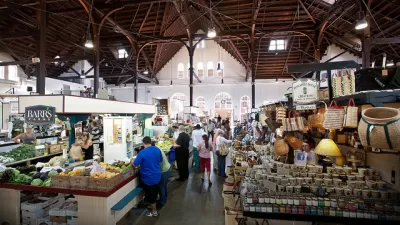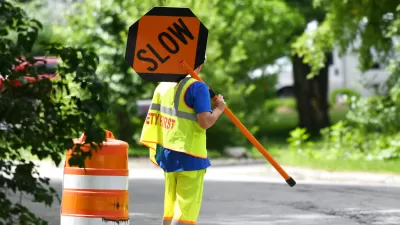Plagued by supermarket chains and natural disasters, the public markets of New Orleans could help revive community identity. Here are some of the ways they're getting back in business.

Neither supermarkets nor farmers' markets, New Orleans public markets once bound the city together. Nina Feldman writes, "[t]he markets were iconic buildings, usually positioned in the center of the neighborhood. They sold produce, meat and dairy in the morning. As the day wore on, the ice melted and food couldn't be kept cold any longer. So in the afternoons and evenings, the markets stopped functioning as markets, but still served as gathering spaces. They were the hubs of their community, hosting events like political rallies and concerts."
The rise of supermarket-based food economics threatened the markets' viability. And their New Orleans location gave rise to additional challenges: "When Hurricane Katrina hit 10 years ago, it proved to be a deadly blow for many of these already fragile structures. The era of demolition by neglect was over; hurricane winds and floodwaters left buildings like the old St. Roch Market destroyed."
Feldman describes post-Katrina efforts to revive and rebrand the iconic structures, reviving some of their old functions in the process. Markets under redevelopment include St. Roch Market, Dryades Market, and Circle Food Store. From the article: "The public market network in New Orleans will never resemble its previous system; the markets' primary function is not as essential to every day life. But they can still offer New Orleans neighborhoods an opportunity to establish a sense of identity."
FULL STORY: Designing the Food Market of the Future

Planetizen Federal Action Tracker
A weekly monitor of how Trump’s orders and actions are impacting planners and planning in America.

Chicago’s Ghost Rails
Just beneath the surface of the modern city lie the remnants of its expansive early 20th-century streetcar system.

San Antonio and Austin are Fusing Into one Massive Megaregion
The region spanning the two central Texas cities is growing fast, posing challenges for local infrastructure and water supplies.

Since Zion's Shuttles Went Electric “The Smog is Gone”
Visitors to Zion National Park can enjoy the canyon via the nation’s first fully electric park shuttle system.

Trump Distributing DOT Safety Funds at 1/10 Rate of Biden
Funds for Safe Streets and other transportation safety and equity programs are being held up by administrative reviews and conflicts with the Trump administration’s priorities.

German Cities Subsidize Taxis for Women Amid Wave of Violence
Free or low-cost taxi rides can help women navigate cities more safely, but critics say the programs don't address the root causes of violence against women.
Urban Design for Planners 1: Software Tools
This six-course series explores essential urban design concepts using open source software and equips planners with the tools they need to participate fully in the urban design process.
Planning for Universal Design
Learn the tools for implementing Universal Design in planning regulations.
planning NEXT
Appalachian Highlands Housing Partners
Mpact (founded as Rail~Volution)
City of Camden Redevelopment Agency
City of Astoria
City of Portland
City of Laramie




























